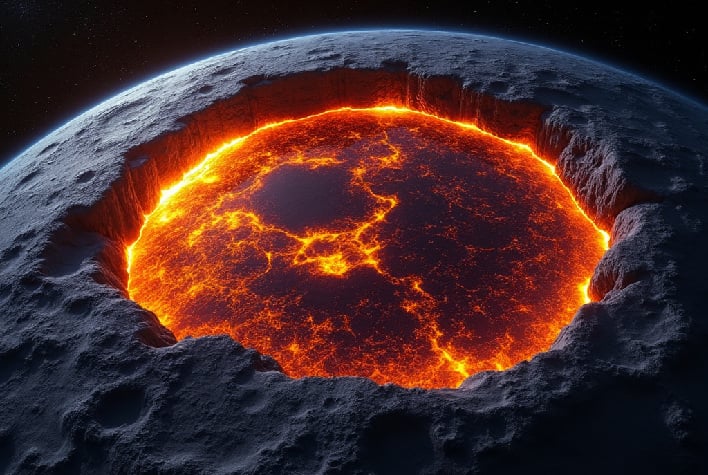Lunar Lander Proves An Ancient Ocean Of Magma Once Covered The Moon
India became the fourth nation to successfully soft-land on the Moon in August 2023. The mission placed a lunar lander close to the lunar South Pole, an area of great interest for scientists, as well as for future human exploration. It was also during that mission Chandrayaan-3’s rover Pragyan began conducting multiple observations of the terrain surrounding the landing site, revealing new insights. One of those being that the Moon may have in fact had a global magma ocean billions of years ago.
“The theory of early evolution of the Moon becomes much more robust in the light of our observations,” remarked Dr Santosh Vadawale from the Physical Research Laboratory, who is co-author of the paper published in Nature.

Before the Chandrayaan mission, the only other evidence of magma oceans was collected in the mid-latitudes of the Moon during the time period of the Apollo program. Rock samples collected during that time have been studied and characterized in detail. Chemical analysis from 23 different sites conducted by Pragyan revealed that the chemical composition of the site around Chandrayaan-3’s Vikram lander is somewhere in the middle of the Apollo 16 mission and then-Soviet Luna-20 mission samples.
Taking this into account, and that the samples from the different missions were collected thousands of kilometers apart, gives credence to the theory the Moon was molten for possibly several tens of millions of years, if not for longer, after being formed.
The team also found evidence of a large meteorite crash in the region some four billion years ago, which is thought to have created the South Pole-Aitken basin, which itself is one of the largest craters known in the solar system, measuring an astounding 2,500km across. The scientists also detected magnesium at the site, believed to be from deep inside the Moon, thrown up from the meteorite crashing into the lunar surface.
“This would have been caused by a big impact of an asteroid, throwing out material from this big basin. In the process, it also excavated a deeper part of the Moon,” explained Professor Anil Bhardwaj, director of India’s Physical Research Laboratory.
While data is still being poured over from the Chandrayaan-3 mission, such as the possibility of an ancient lunar magma ocean, India plans to launch another mission to the Moon in 2025 or 2026, which the space agency hopes to bring back samples of the lunar surface for analysis from.

